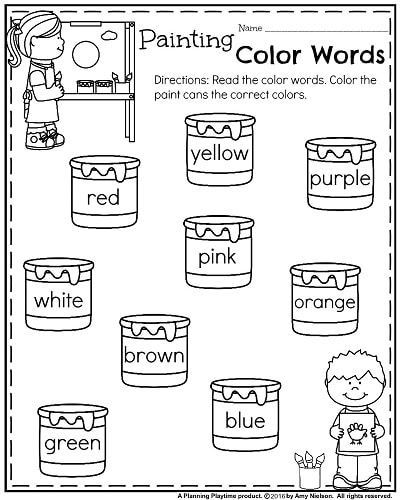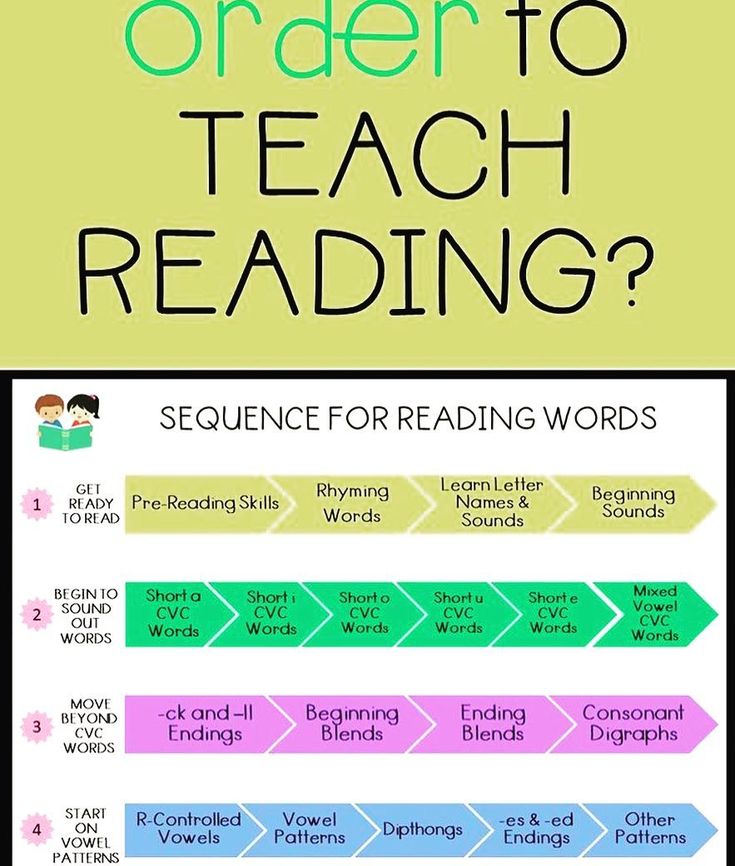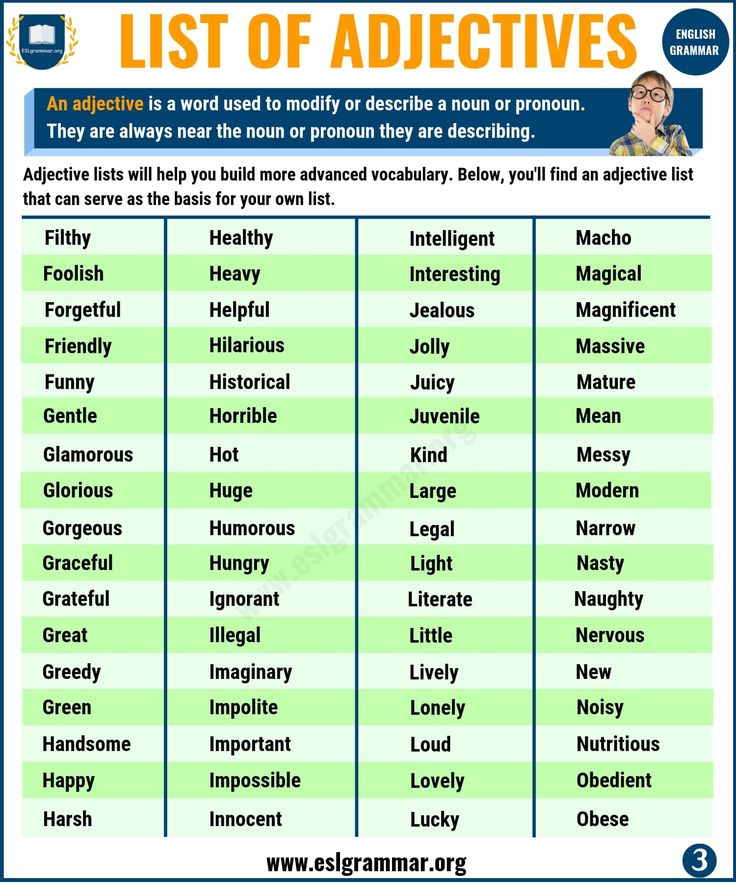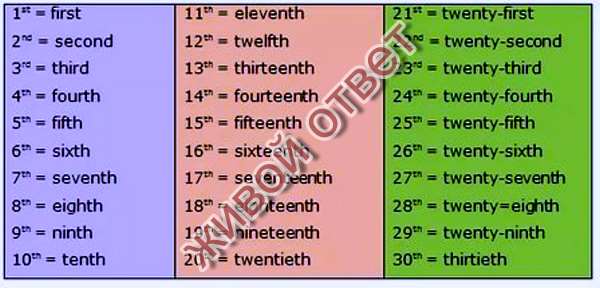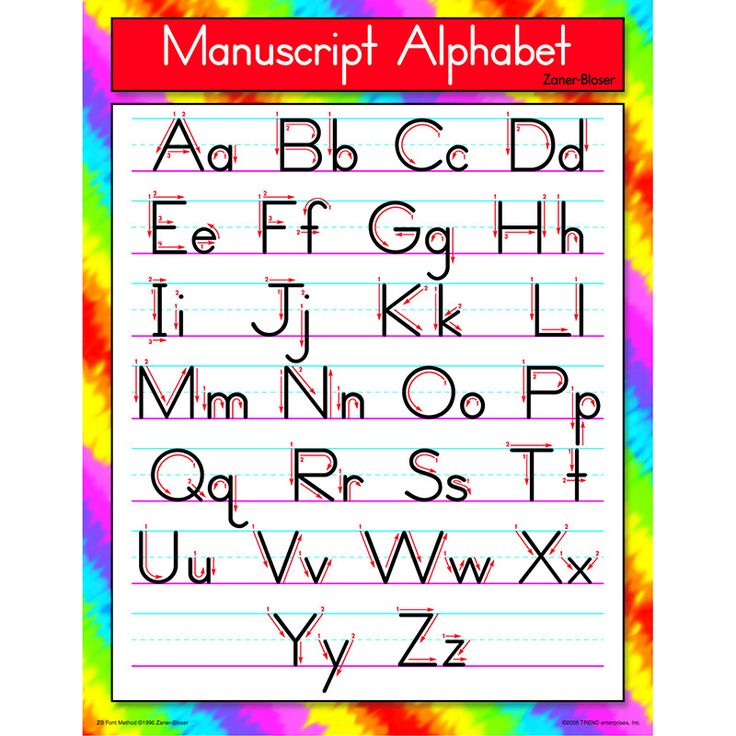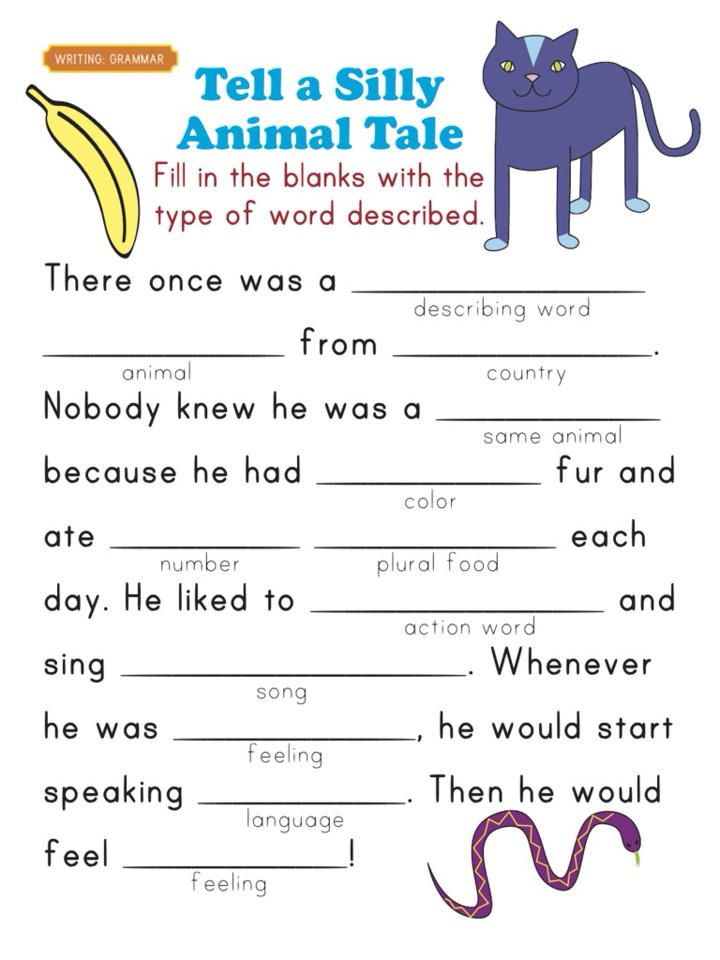Children sight words
Teach Your Child to Read
Print your own sight words flash cards. Create a set of Dolch or Fry sight words flash cards, or use your own custom set of words.
More
Follow the sight words teaching techniques. Learn research-validated and classroom-proven ways to introduce words, reinforce learning, and correct mistakes.
More
Play sight words games. Make games that create fun opportunities for repetition and reinforcement of the lessons.
More
Learn what phonological and phonemic awareness are and why they are the foundations of child literacy. Learn how to teach phonemic awareness to your kids.
More
A sequenced curriculum of over 80 simple activities that take children from beginners to high-level phonemic awareness. Each activity includes everything you need to print and an instructional video.
More
Teach phoneme and letter sounds in a way that makes blending easier and more intuitive. Includes a demonstration video and a handy reference chart.
More
Sightwords.com is a comprehensive sequence of teaching activities, techniques, and materials for one of the building blocks of early child literacy. This collection of resources is designed to help teachers, parents, and caregivers teach a child how to read. We combine the latest literacy research with decades of teaching experience to bring you the best methods of instruction to make teaching easier, more effective, and more fun.
Sight words build speed and fluency when reading. Accuracy, speed, and fluency in reading increase reading comprehension. The sight words are a collection of words that a child should learn to recognize without sounding out the letters. The sight words are both common, frequently used words and foundational words that a child can use to build a vocabulary. Combining sight words with phonics instruction increases a child’s speed and fluency in reading.
This website includes a detailed curriculum outline to give you an overview of how the individual lessons fit together.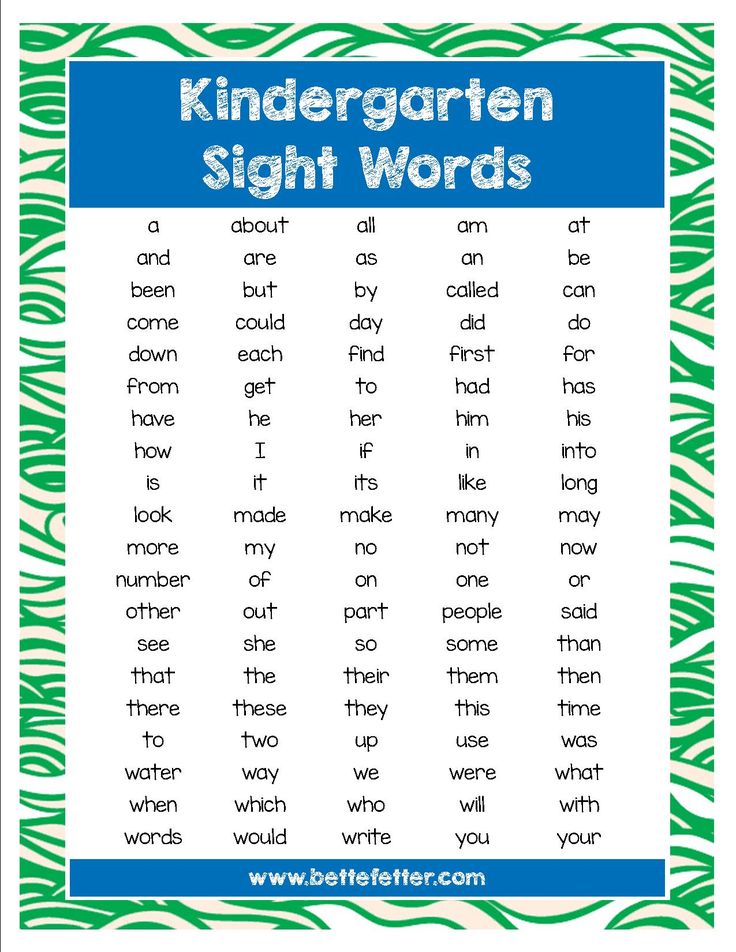 It provides detailed instructions and techniques to show you how to teach the material and how to help a child overcome common roadblocks. It also includes free teaching aids, games, and other materials that you can download and use with your lessons.
It provides detailed instructions and techniques to show you how to teach the material and how to help a child overcome common roadblocks. It also includes free teaching aids, games, and other materials that you can download and use with your lessons.
Many of the teaching techniques and games include variations for making the lesson more challenging for advanced students, easier for new or struggling students, and just different for a bit of variety. There are also plenty of opportunities, built into the lessons and games, to observe and assess the child’s retention of the sight words. We encourage you to use these opportunities to check up on the progress of your student and identify weaknesses before they become real problems.
Help us help you. We want this to be a resource that is constantly improving. So please provide us with your feedback, both the good and the bad. We want to know which lessons worked for your child, and which fell short. We encourage you to contribute your own ideas that have worked well in the home or classroom.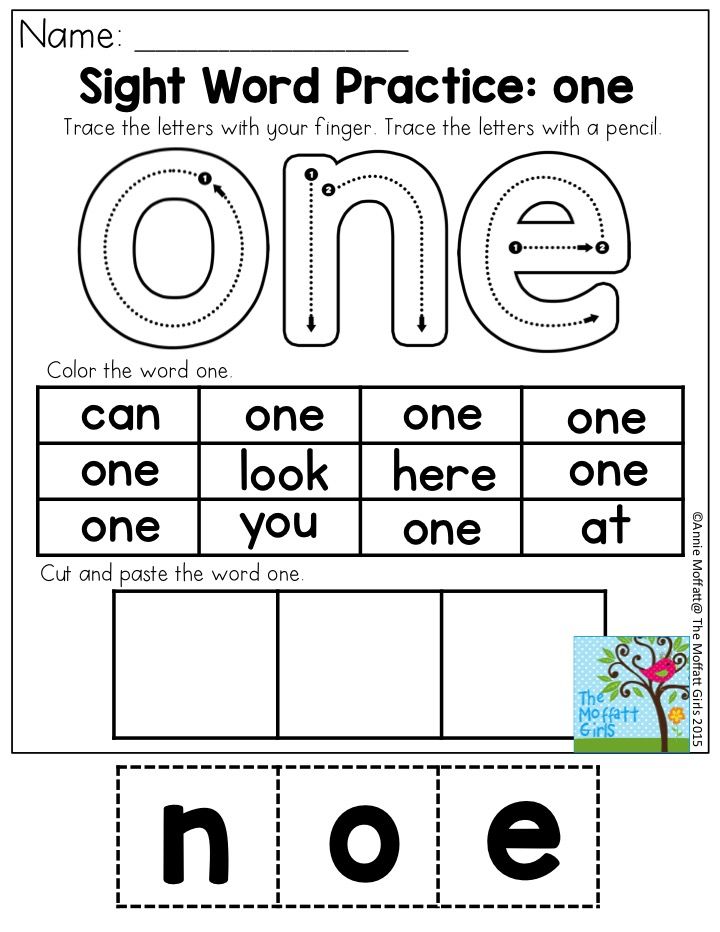 You can communicate with us through email or simply post a response in the comments section of the relevant page.
You can communicate with us through email or simply post a response in the comments section of the relevant page.
Sight Words | Sight Words: Teach Your Child to Read
Learn the history behind Dolch and Fry sight words, and why they are important in developing fluent readers.
More
Follow the sight words teaching techniques. Learn research-validated and classroom-proven ways to introduce words, reinforce learning, and correct mistakes.
More
Print your own sight words flash cards. Create a set of Dolch or Fry sight words flash cards, or use your own custom set of words.
More
Play sight words games. Make games that create fun opportunities for repetition and reinforcement of the lessons.
More
- Overview
- What Are Sight Words?
- Types of Sight Words
- When to Start
- Scaling & Scaffolding
- Research
- Questions and Answers
Sight words instruction is an excellent supplement to phonics instruction.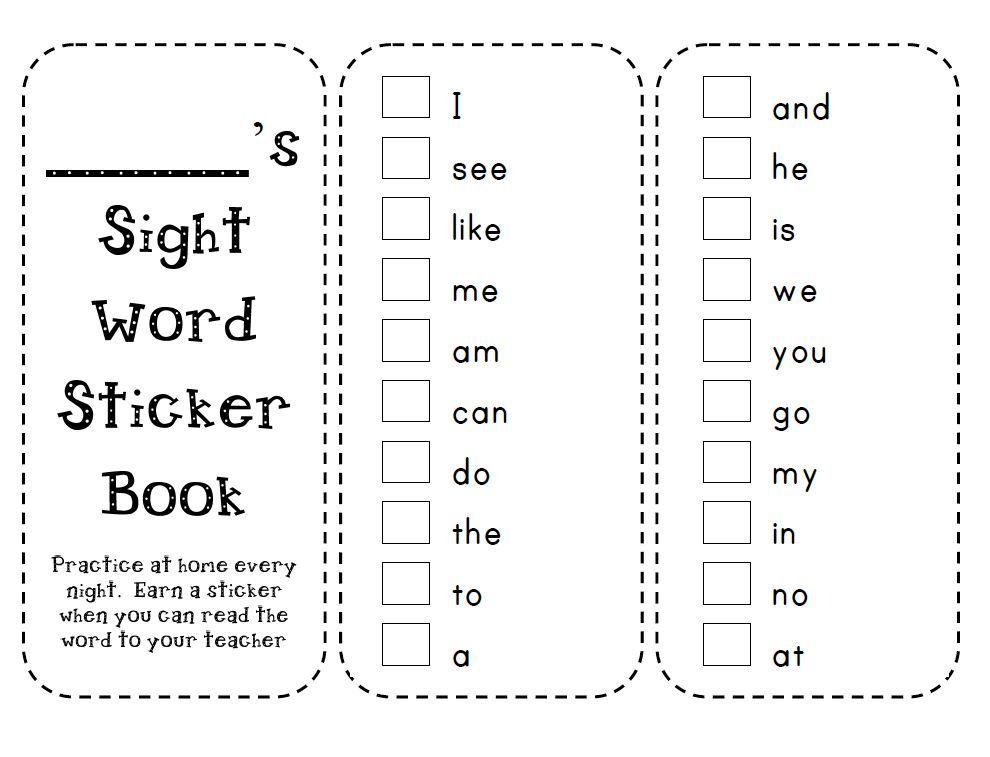 Phonics is a method for learning to read in general, while sight words instruction increases a child’s familiarity with the high frequency words he will encounter most often.
Phonics is a method for learning to read in general, while sight words instruction increases a child’s familiarity with the high frequency words he will encounter most often.
The best way to learn sight words is through lots and lots of repetition, in the form of flashcard exercises and word-focused games.
↑ Top
Sight words are words that should be memorized to help a child learn to read and write. Learning sight words allows a child to recognize these words at a glance — on sight — without needing to break the words down into their individual letters and is the way strong readers recognize most words. Knowing common, or high frequency, words by sight makes reading easier and faster, because the reader does not need to stop to try and sound out each individual word, letter by letter.
Sight Words are memorized so that a child can recognize commonly used or phonetically irregular words at a glance, without needing to go letter-by-letter.
Other terms used to describe sight words include: service words, instant words (because you should recognize them instantly), snap words (because you should know them in a snap), and high frequency words. You will also hear them referred to as Dolch words or Fry words, the two most commonly used sight words lists.
Sight words are the glue that holds sentences together.
These pages contain resources to teach sight words, including: sight words flash cards, lessons, and games. If you are new to sight words, start with the teaching strategies to get a road map for teaching the material, showing you how to sequence the lessons and activities.
↑ Top
Sight words fall into two categories:
- Frequently Used Words — Words that occur commonly in the English language, such as it, can, and will.
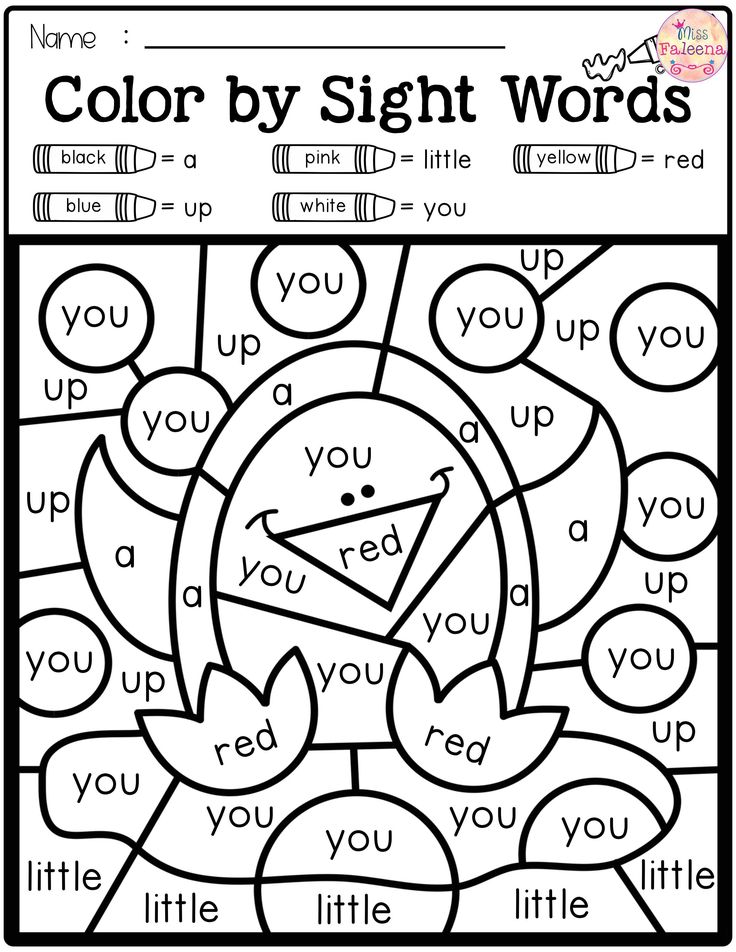 Memorizing these words makes reading much easier and smoother, because the child already recognizes most of the words and can concentrate their efforts on new words. For example, knowing just the Dolch Sight Words would enable you to read about 50% of a newspaper or 80% of a children’s book.
Memorizing these words makes reading much easier and smoother, because the child already recognizes most of the words and can concentrate their efforts on new words. For example, knowing just the Dolch Sight Words would enable you to read about 50% of a newspaper or 80% of a children’s book. - Non-Phonetic Words — Words that cannot be decoded phonetically, such as buy, talk, or come. Memorizing these words with unnatural spellings and pronunciations teaches not only these words but also helps the reader recognize similar words, such as guy, walk, or some.
There are several lists of sight words that are in common use, such as Dolch, Fry, Top 150, and Core Curriculum. There is a great deal of overlap among the lists, but the Dolch sight word list is the most popular and widely used.
3.1 Dolch Sight Words
The Dolch Sight Words list is the most commonly used set of sight words. Educator Dr. Edward William Dolch developed the list in the 1930s-40s by studying the most frequently occurring words in children’s books of that era. The list contains 220 “service words” plus 95 high-frequency nouns. The Dolch sight words comprise 80% of the words you would find in a typical children’s book and 50% of the words found in writing for adults. Once a child knows the Dolch words, it makes reading much easier, because the child can then focus his or her attention on the remaining words.
Educator Dr. Edward William Dolch developed the list in the 1930s-40s by studying the most frequently occurring words in children’s books of that era. The list contains 220 “service words” plus 95 high-frequency nouns. The Dolch sight words comprise 80% of the words you would find in a typical children’s book and 50% of the words found in writing for adults. Once a child knows the Dolch words, it makes reading much easier, because the child can then focus his or her attention on the remaining words.
More
3.2 Fry Sight Words
The Fry Sight Words list is a more modern list of words, and was extended to capture the most common 1,000 words. Dr. Edward Fry developed this expanded list in the 1950s (and updated it in 1980), based on the most common words to appear in reading materials used in Grades 3-9. Learning all 1,000 words in the Fry sight word list would equip a child to read about 90% of the words in a typical book, newspaper, or website.
More
3.3 Top 150 Written Words
The Top 150 Written Words is the newest of the word lists featured on our site, and is commonly used by people who are learning to read English as a non-native language. This list consists of the 150 words that occur most frequently in printed English, according to the Word Frequency Book. This list is recommended by Sally E. Shaywitz, M.D., Professor of Learning Development at Yale University’s School of Medicine.
More
3.4 Other Sight Words Lists
There are many newer variations, such as the Common Core sight words, that tweak the Dolch and Fry sight words lists to find the combination of words that is the most beneficial for reading development. Many teachers take existing sight word lists and customize them, adding words from their own classroom lessons.
↑ Top
Before a child starts learning sight words, it is important that he/she be able to recognize and name all the lower-case letters of the alphabet.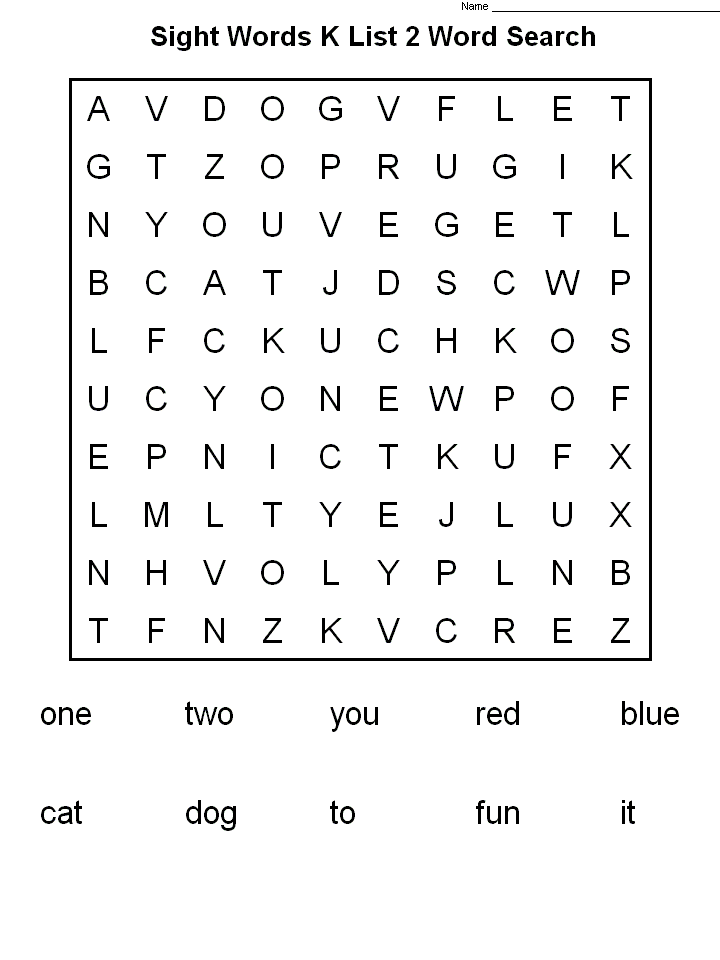 When prompted with a letter, the child should be able to name the letter quickly and confidently. Note that, different from learning phonics, the child does not need to know the letters’ sounds.
When prompted with a letter, the child should be able to name the letter quickly and confidently. Note that, different from learning phonics, the child does not need to know the letters’ sounds.
Before starting sight words, a child needs to be able to recognize and name all the lower-case letters of the alphabet.
If a student’s knowledge of letter names is still shaky, it is important to spend time practicing this skill before jumping into sight words. Having a solid foundation in the ability to instantly recognize and name the alphabet letters will make teaching sight words easier and more meaningful for the child.
Go to our Lessons for proven strategies on how to teach and practice sight words with your child.
↑ Top
Every child is unique and will learn sight words at a different rate. A teacher may have a wide range of skill levels in the same classroom.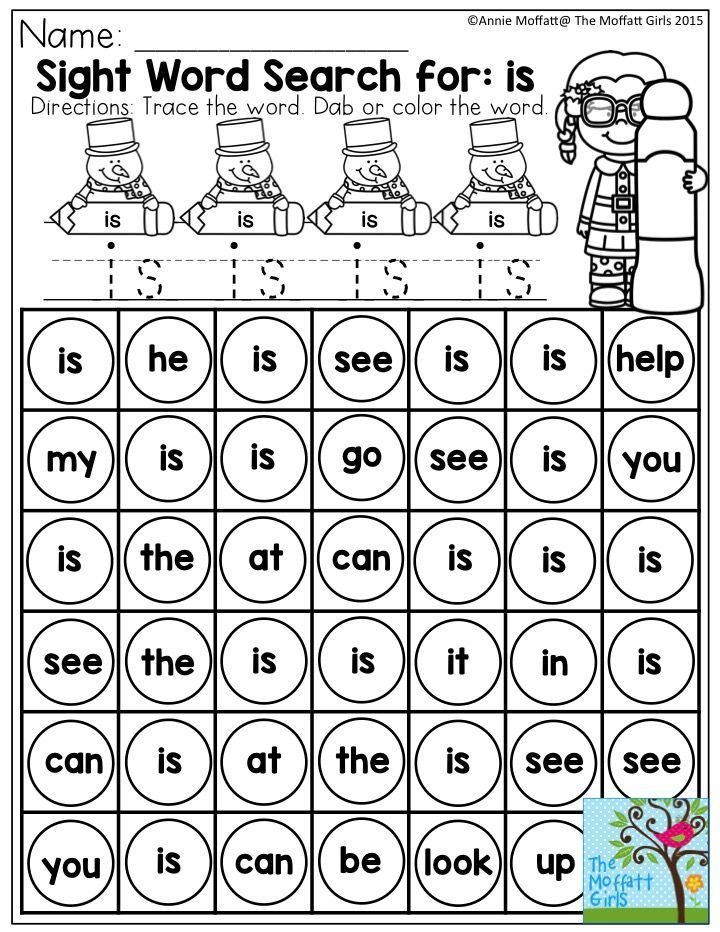 Many of our sight words games can be adjusted to suit different skill levels.
Many of our sight words games can be adjusted to suit different skill levels.
Many of our activity pages feature recommendations for adjusting the game to the needs of your particular child or classroom:
- Confidence Builders suggest ways to simplify a sight words game for a struggling student.
- Extensions offer tips for a child who loves playing a particular game but needs to be challenged more.
- Variations suggest ways to change up the game a little, by tailoring it to a child’s special interests or making it “portable.”
- Small Group Adaptations offer ideas for scaling up from an individual child to a small group (2-5 children), ensuring that every child is engaged and learning.
↑ Top
Our sight words teaching techniques are based not only on classroom experience but also on the latest in child literacy research.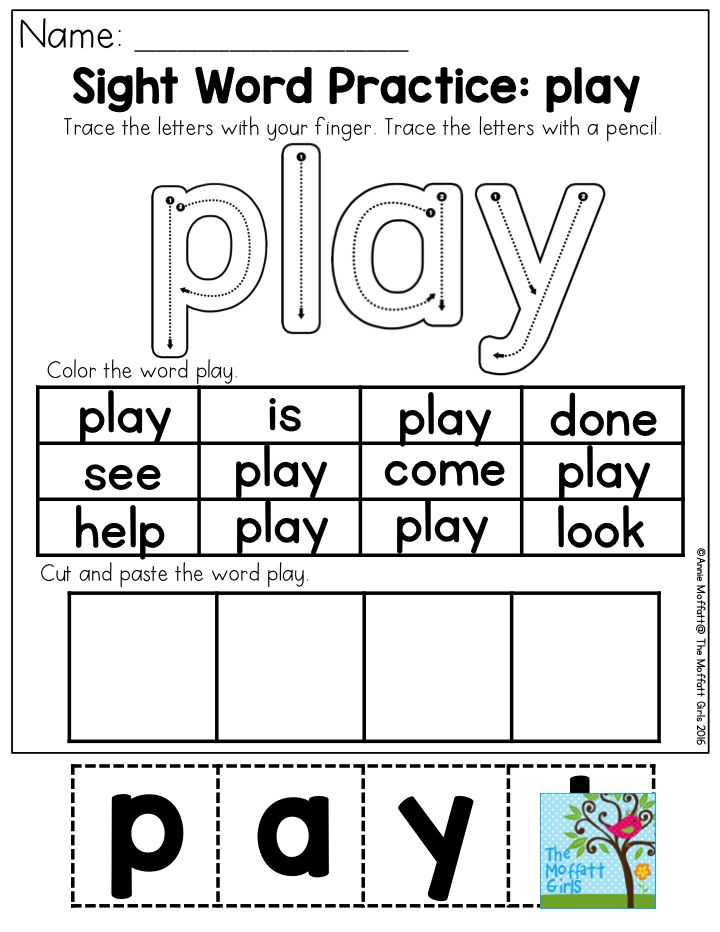 Here is a bibliography of some of the research supporting our approach to sight words instruction:
Here is a bibliography of some of the research supporting our approach to sight words instruction:
- Ceprano, M. A. “A review of selected research on methods of teaching sight words.” The Reading Teacher 35:3 (1981): 314-322.
- Ehri, Linnea C. “Grapheme–Phoneme Knowledge Is Essential for Learning to Read Words in English.” Word Recognition in Beginning Literacy. Mahwah, NJ: L. Erlbaum Associates, 1998.
- Enfield, Mary Lee, and Victoria Greene. Project Read. www.projectread.com. 1969.
- Gillingham, Anna, and Bessie W. Stillman. The Gillingham Manual: Remedial Training for Students with Specific Disability in Reading, Spelling, and Penmanship, 8th edition. Cambridge, MA: Educators Publishing Service, 2014.
- Nist, Lindsay, and Laurice M. Joseph. “Effectiveness and Efficiency of Flashcard Drill Instructional Methods on Urban First-Graders’ Word Recognition, Acquisition, Maintenance, and Generalization.
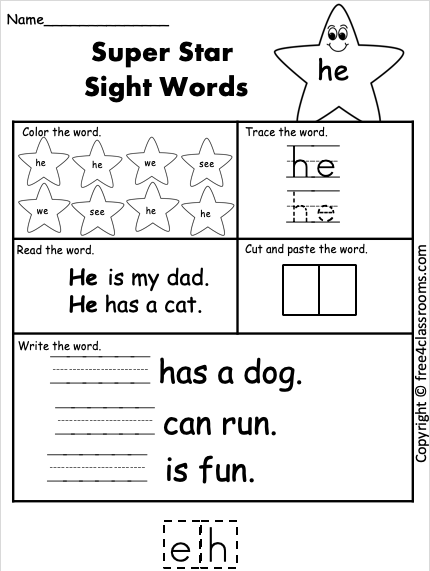 ” School Psychology Review 37:3 (Fall 2008): 294-308.
” School Psychology Review 37:3 (Fall 2008): 294-308. - Shaywitz, Sally E. Overcoming Dyslexia: A New and Complete Science-Based Program for Reading Problems at Any Level. New York: Alfred A. Knopf, 2003.
- Stoner, J.C. “Teaching at-risk students to read using specialized techniques in the regular classroom.” Reading and Writing: An Interdisciplinary Journal 3 (1991).
- Wilson, Barbara A. “The Wilson Reading Method.” Learning Disabilities Journal 8:1 (February 1998): 12-13.
- Wilson, Barbara A. Wilson Reading System. Millbury, MA: Wilson Language Training, 1988.
↑ Top
Leave a Reply
children's words in English
Child. This word in English means child. It can often be found in the list of the most beautiful words. In the same place you will read: sweetheart - cute; butterfly - butterfly; inspiration - inspiration.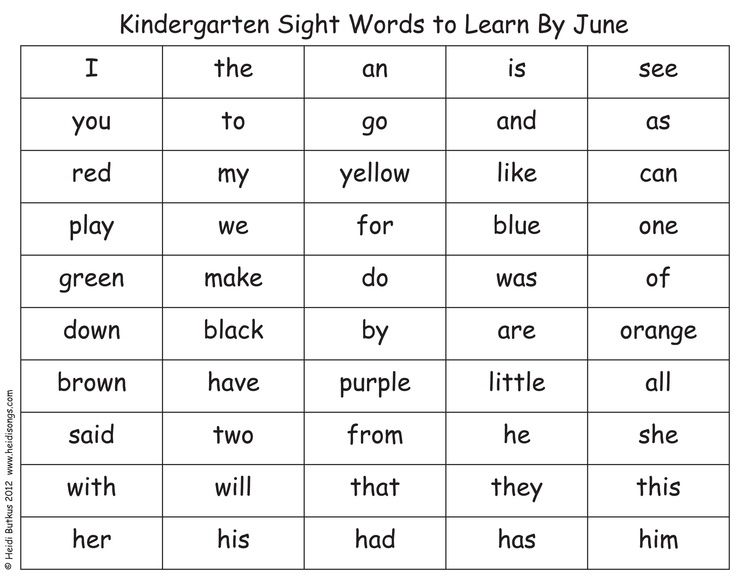 In Russian, many diminutive words are invented by the children themselves: mommy, toy, yummy. We decided to make a list of "The most kind, touching and cute children's words in English."
In Russian, many diminutive words are invented by the children themselves: mommy, toy, yummy. We decided to make a list of "The most kind, touching and cute children's words in English."
Many people watch films, cartoons for children in English, and there such words are found in large numbers. Perhaps you have acquaintances or friends with children abroad - here you will definitely need a short study of English from the world of children. nine0003
We are used to the fact that any English text consists of standard words on various topics, from which English learning begins. In a kindergarten, for example, they can study the language with children, but they also do not always use children's words in English. Now we will tell you what words are most common among children of native speakers. Diminutive children's words in English are created using suffixes: -y / -ie.
For example:
Dog doggy - doggy. nine0011 Doll dolly - doll.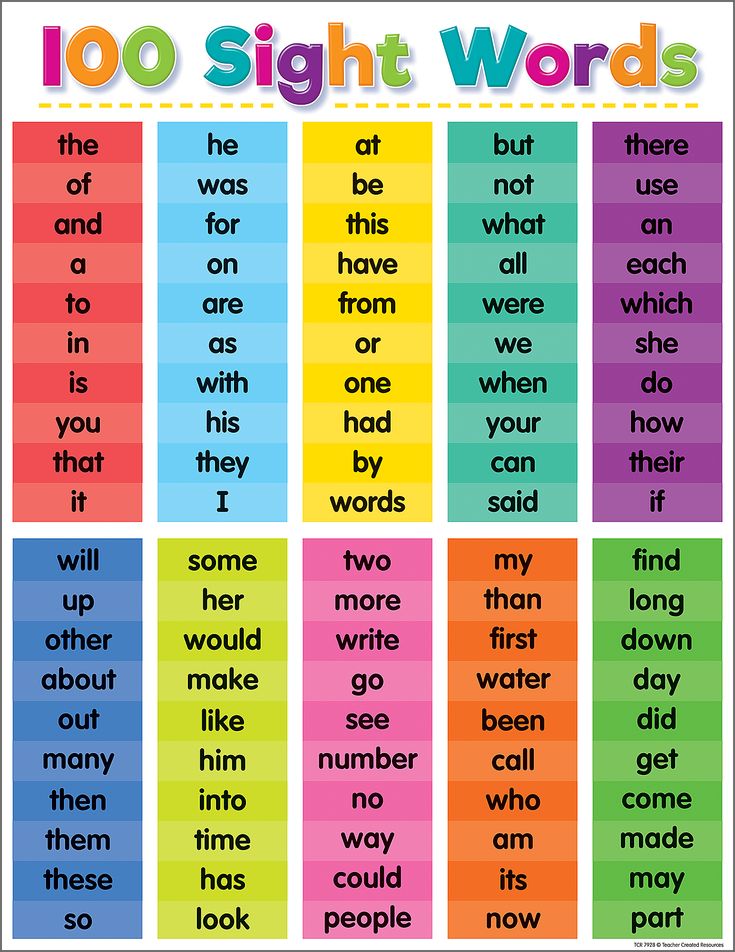
horse horsie - a horse.
Tune in the right way, remember your childhood and let's dive into the world of children's English together! Let's start learning with a vocabulary for kids.
Binky
Yummy
Uppy
Tiny-winy
Tag
Roly-poly
Go beddy-byes
Baby's first word - often about parents. When the baby says "mom" or "dad" - the soul rejoices, and you just blur in a smile. Over time, the baby learns to talk and affectionately calls you "mommy" and "daddy." nine0011 Such children's words in English will sound no less cute 🙂
Mommy ─ mommy; mommy.
Daddy daddy.
Children often say "granny". In English, it will sound like "nanny".
Since only a few words can be made into diminutives in English, native speakers, for the most part, add the words “little”, “sweet”, “dear” to soften the word.
Let's take, for example, the space that surrounds a small child and the place of his first games.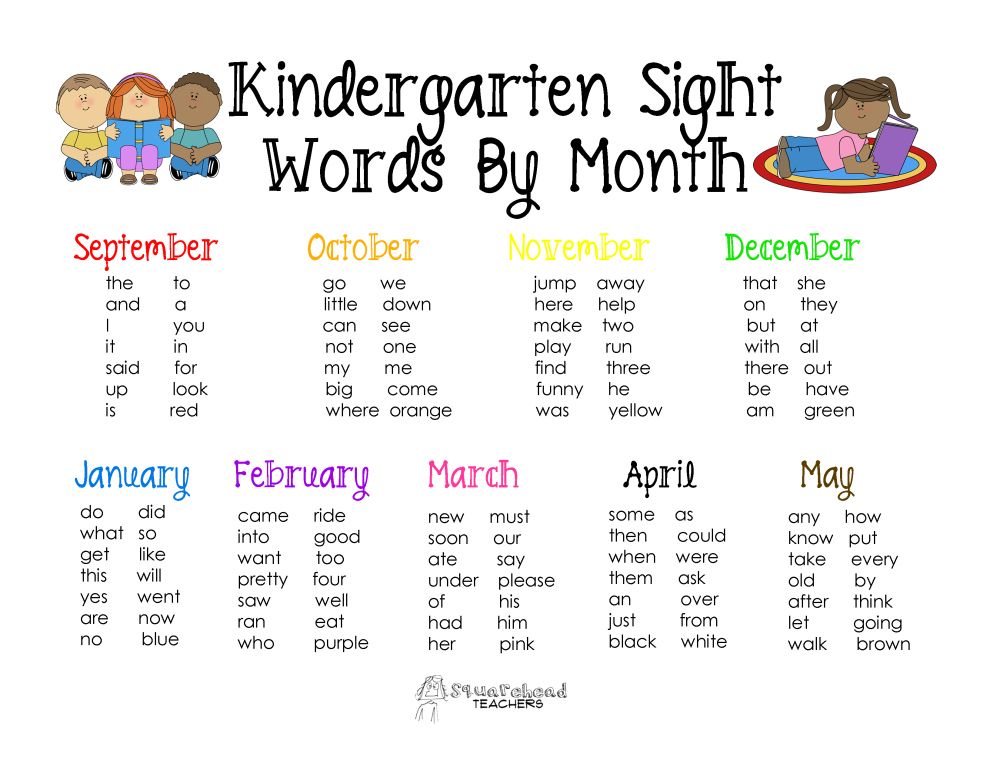 The very word “house” for a kid learning English will sound like for an adult - “house”, however, if you add “little”, a serious adult house will turn into a house or even a little house familiar to a Russian-speaking child. The same thing happens with the room - in English it will sound like "little room". But a small city a kid can translate and how "little town", and as "townlet".
The very word “house” for a kid learning English will sound like for an adult - “house”, however, if you add “little”, a serious adult house will turn into a house or even a little house familiar to a Russian-speaking child. The same thing happens with the room - in English it will sound like "little room". But a small city a kid can translate and how "little town", and as "townlet".
There are also more complex suffixes that add emotional coloring not only to children's English, but also to ordinary speech. The already mentioned townlet is just one of many examples. Let's look at them in a table.
| Suffix | English | Russian |
| -let | islet | island |
| -kin | boykin | boy |
| -ule | animacule | animal |
| -ette | kitchenette | kitchenette |
| -ock | hillock | mound |
| +ling | catling; manling; firstling | kitten; little man; firstborn |
Children use diminutive suffixes not only to name small animals and their cubs, but also for affectionate designations of already adult animals and birds.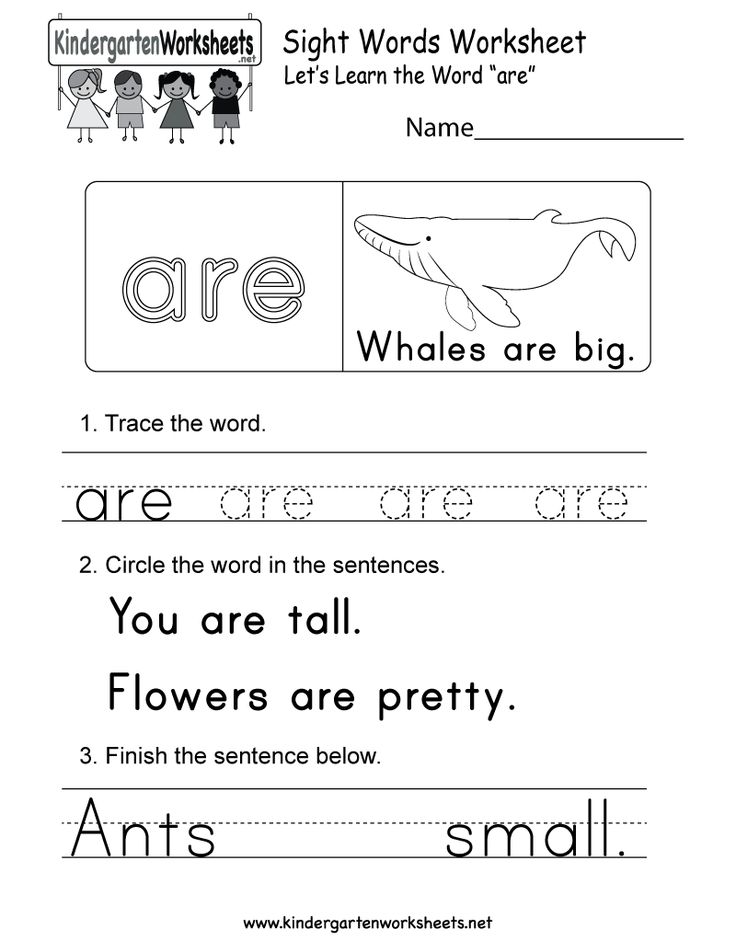 Here's what it looks like:
Here's what it looks like:
owlet - owlet
dovelet - dove
leveret - hare
piglet - pig
In fact, with the right suffixes, almost any word can be made cute and affectionate. In Russian, “dress” becomes a soft synonym for the word “dress”, in English “dress” is formed from “dress”; a suit can be called a “suit”, or you can call it a “suitie” - the logic here is quite simple. Dictionaries do not abound with examples of such derivatives, but that's what fantasy is for, to compose words yourself! 😉
Also in English there are seemingly very childish words that adults use quite often. You must have heard them in songs or movies.
Snookums ─ cute
Honeybunch ─ cute; darling
Sweetie pie (US version)
Babykins
Kiddy, childie, moppet
In the same way, children's English brought its ideas to abbreviations. To tell the truth, everything here is also quite concise. For example, in Russian on behalf of "Olga" you can create many affectionate forms: Olenka, Olechka, Olya, Olyusya.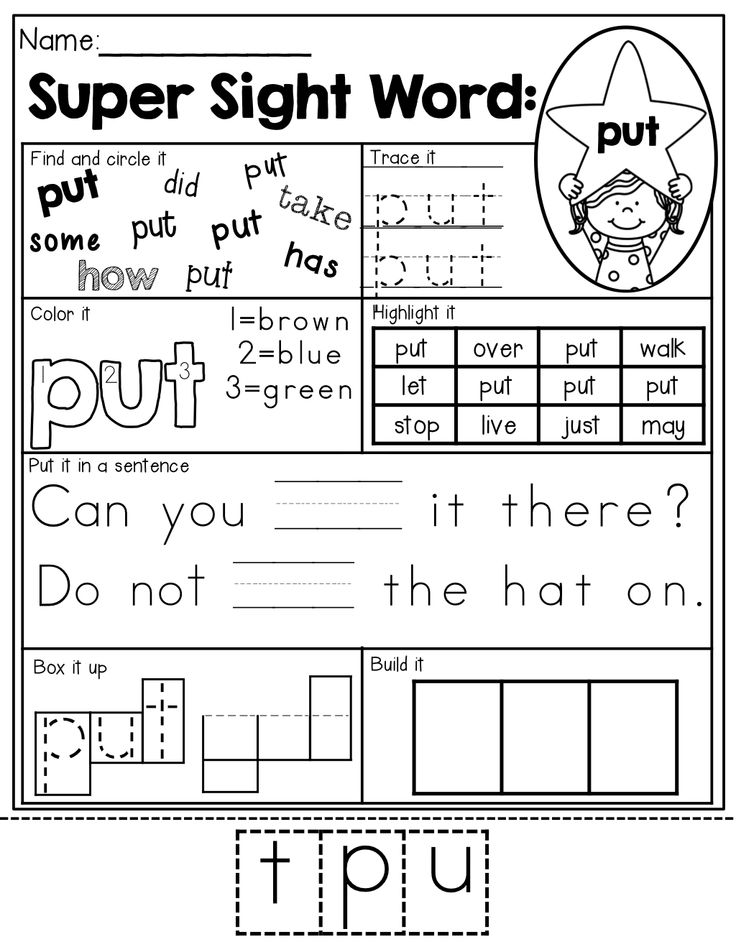 There can be one form in English using the same suffixes. nine0011 John ─ Johnny
There can be one form in English using the same suffixes. nine0011 John ─ Johnny
Barbara ─ Barbie
Emily ─ Emy
Kathryn ─ Katie
Sandra ─ Sandy
Victoria ─ Vicky
See how simple it is? Learn children's words in English with your childie 🙂 And in our blog you will find not only words, but also useful materials for self-study of English.
Everything will be English with Allright!
The very first English words on topics for children
Is it possible to teach a preschool child to speak a foreign language without resorting to specialized courses and lessons with a teacher? The experience of bilingual families, as well as enthusiastic parents who set themselves such a goal, shows that yes! Of course, with self-study, the level of language proficiency will directly depend on how much time and effort the parent devotes to this task. However, even a slight but regular attention to the topic of the English language will help introduce the baby to the first English words and immerse him in the world of a foreign language. nine0003
nine0003
At the end of the article you can view and download cards of the first 60 English words on 5 topics (family, animals, colors, fruits, vegetables). And also, we will tell you how you can make self-study of a foreign language effective, exciting and natural.
Contents of the article:
- At what age should a child start learning a foreign language
- Learning English in a bilingual family
- How to learn English with a child on your own? nine0152
- How can a child learn foreign words?
- 60 first English words with transcription and translation
The best age for a child to start learning English
The question of at what age to start learning English is still a matter of thought for parents and teachers. Our practice shows that the most optimal age is 3-5 years. This is exactly the time when children quickly and easily absorb any new information presented in a fun way. That is why the main task of the teacher is to show that communicating in a foreign language is simple and natural. In this regard, teaching according to the communicative method, which is based on language practice, shows the best results when teaching preschool children. nine0003
That is why the main task of the teacher is to show that communicating in a foreign language is simple and natural. In this regard, teaching according to the communicative method, which is based on language practice, shows the best results when teaching preschool children. nine0003
Don't forget to get a free coloring book on African animals at the end of the article.
Parents can adopt the principles and rules of the communicative methodology by independently organizing education with the baby and forming the presence of English speech in their everyday life. For example, if you meet a dog on a walk on your way, call it in English “This is a dog. Dog is a dog in English. Use English vocabulary in the context of real circumstances and try to say words as part of whole phrases. It is this gradual and comfortable acquaintance of the child with the world of the English language that makes up the lion's share of the process of independent study. nine0003
The effectiveness of independent language learning directly depends on the time and effort that a parent devotes to his child
Pupils of 3-4 years old learn to use new words very quickly, gradually building whole phrases and sentences out of them.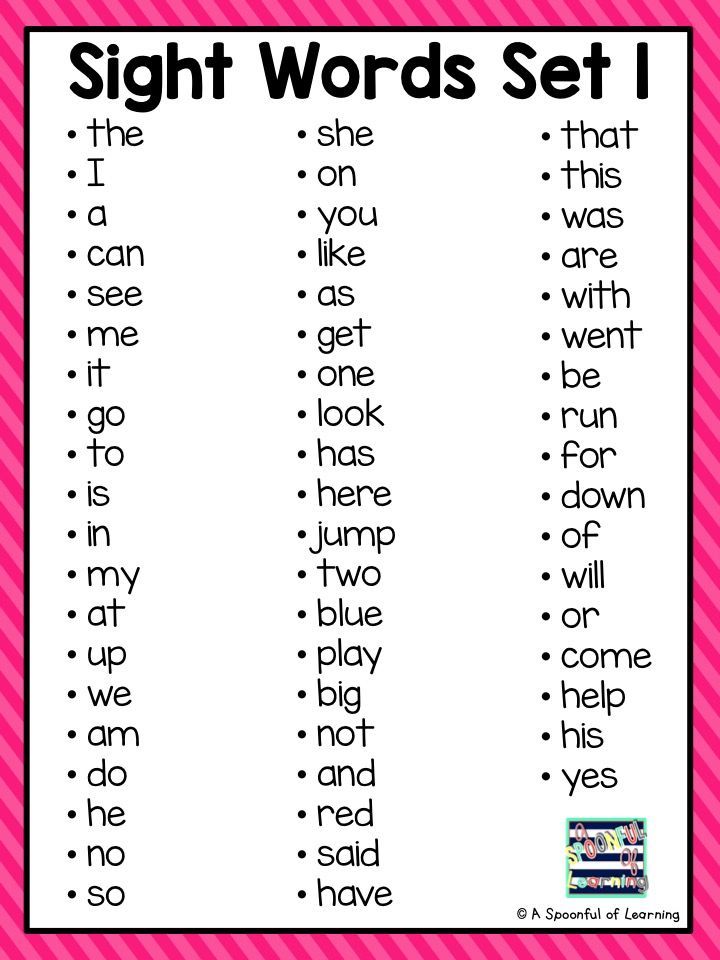 But grammar rules, the alphabet and writing exercises are what are best left for school age. In early childhood, the baby learns all the features of the language through practice, as is the case with children developing in a bilingual environment. nine0003
But grammar rules, the alphabet and writing exercises are what are best left for school age. In early childhood, the baby learns all the features of the language through practice, as is the case with children developing in a bilingual environment. nine0003
Learning English with a child in a multicultural family
One often hears the opinion that in order to start learning it is necessary that the child already has an excellent command of his native language. Otherwise, English classes will not only be useless, but will also cause language confusion in the mind of the baby. However, the myth that a second language in the arsenal can harm a polyglot child successfully refutes the experience of thousands of bilingual families.
Active immersion in a multicultural environment makes the baby go all the way to mastering speech, as in the case of his native language. A lot of communicative practice and a living example before my eyes allow you to quickly navigate and intuitively understand the meaning of words without the need for mental translation. nine0003
nine0003
Experts say that children's bilingualism, with its ability to learn two languages simultaneously in the native format, persists up to 7-8 years. In the course of how the child masters writing skills, it fades, but nevertheless, the opportunity to learn languages easier and faster than usual remains for life. An added bonus for children who learn multiple languages early is excellent memory and cognitive abilities, which later help in other subjects. Families speaking the same language, of course, cannot fully recreate all the conditions of a multicultural family, but they can adopt some of its elements. nine0003
Bilingual children after 7-8 years of age retain the ability to learn foreign languages easier and faster
How to learn English with a child on your own?
Self-study English is easier than many parents imagine. The main principle is that English surrounds us always and everywhere. Remember how your baby began to speak his native language? What were his first words? Of course, repeating after his parents, he learned to name things that surround him in everyday life: body parts, vegetables and fruits, favorite toys and animals .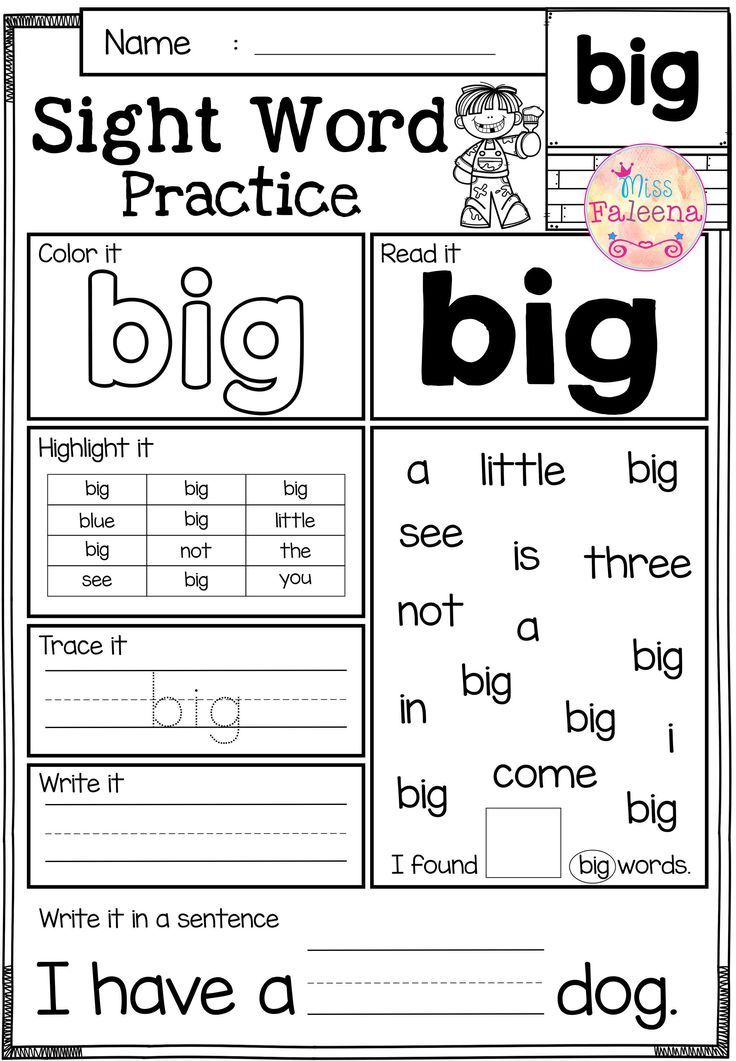 .. Starting to learn a foreign language, it is worth moving along the same path, because even lullabies in English in early childhood, will already contribute to the further development of the baby. nine0003
.. Starting to learn a foreign language, it is worth moving along the same path, because even lullabies in English in early childhood, will already contribute to the further development of the baby. nine0003
Many parents believe that it is necessary to start learning English with a child from letters and the alphabet. But this is not at all what you need to pay attention to when it comes to teaching preschoolers. First of all, focus on expanding your vocabulary, practicing speaking and listening skills. To do this, just try to include as many English words as possible in your life.
If it is convenient for you to recreate a multicultural environment at home, then do it and try to communicate with your baby only in English at home. But even regular classes for 15-20 minutes a day will be no less effective, when you and your child study a colorful English book or cards, or maybe just communicate in English. It is important to show that English is a natural part of your life. Try to associate English with some daily routine, such as 5 o'clock tea, the drive home from kindergarten, or a joint breakfast where you communicate in a foreign language and learn words in a relaxed way. The benefit of this method is that learning new words in English becomes an interesting and effective activity. Your child does not memorize new words, but consciously memorizes them. nine0003
Learn 10 English words a day = regular foreign language classes for 15-20 minutes
If mom or dad speaks English at a conversational level, then they will be the best guide to the world of a new language. Emotional closeness and trust in the relationship will allow the child to avoid the possible stress of learning new information, and the desire to spend time with his parent for a fun activity will be the best motivation. But even a parent who speaks basic English can also be productive with their child. Remember that the most important thing at this stage is not so much the availability of special knowledge as your keen interest, i.e. you need to help your child learn English words every day. nine0003
How to learn English words with a child?
Modern children are surrounded by the English language, so you can gain new vocabulary in the most ordinary life circumstances.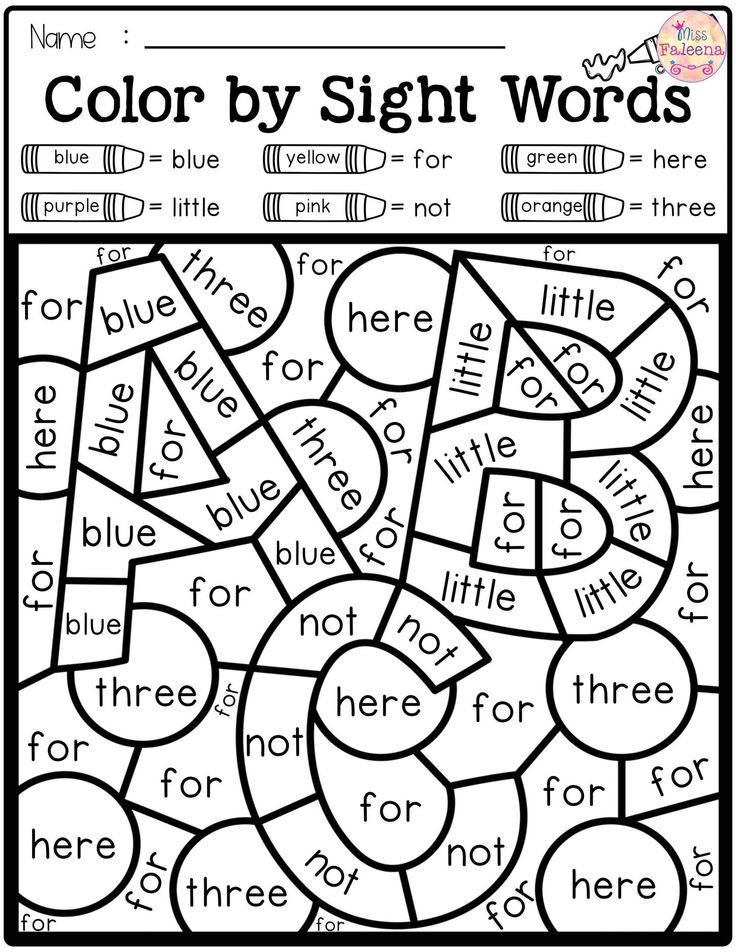 For example, explaining why the favorite game is called "Angry Birds", where the name Spiderman came from, and what "free potatoes" means. Translate texts on T-shirts, toy boxes together and pay attention to accidentally heard English words. Thus, you will not only quickly replenish your vocabulary, but also show your child how easily and naturally English is integrated into everyday life. The ability to look at a foreign language as something natural will save the child from the language barrier and build self-confidence during the conversation. nine0003
For example, explaining why the favorite game is called "Angry Birds", where the name Spiderman came from, and what "free potatoes" means. Translate texts on T-shirts, toy boxes together and pay attention to accidentally heard English words. Thus, you will not only quickly replenish your vocabulary, but also show your child how easily and naturally English is integrated into everyday life. The ability to look at a foreign language as something natural will save the child from the language barrier and build self-confidence during the conversation. nine0003
Children easily memorize the simplest words for objects and phenomena that surround them every day: colors, toys, body parts, fruits and vegetables, etc. This is due to the fact that the child has a well-developed imagination and he learns a foreign word visually, without the need to correlate it with the Russian translation.
Learn words from the objects and phenomena around your baby
Choose one or more comfortable ways for children to learn English words together:
1.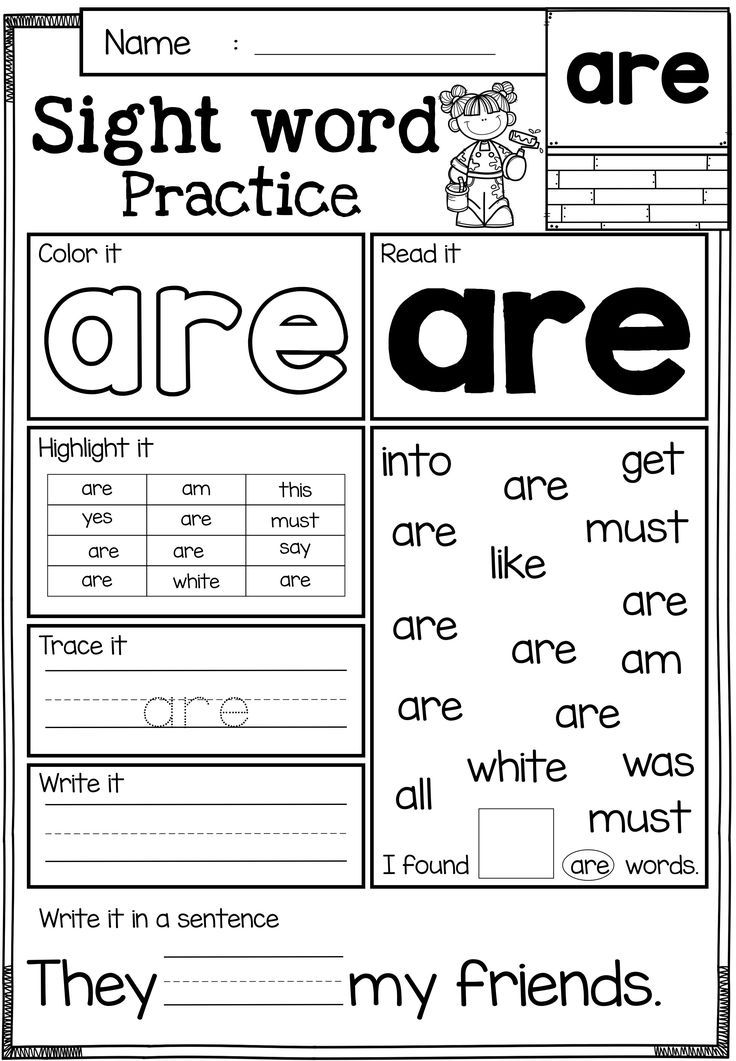 Communication
Communication
The most relaxed and easiest way is live communication. Each new word can be approached with interest and play, while learning you do not need special conditions.
For example, at dinner, ask to name the foods on your plate in English, or name the objects that surround you yourself. In order to make the process more interesting, use a different voice tone, invent sounds and movements. Let the child repeat the word after you, getting involved in a fun game. Gradually show how the learned English words can be combined into phrases to describe the plots of the pictures: white cat, black cat. Then add all the new details - three white cats. nine0003
2. Flashcards
Learning English words with flashcards is one of the most popular methods. Bright cards with the image of various objects will help you learn the first English words. Depending on the age of the child, you can play different games with them. For example, for very young students, it will be enough to simply name the objects in the pictures.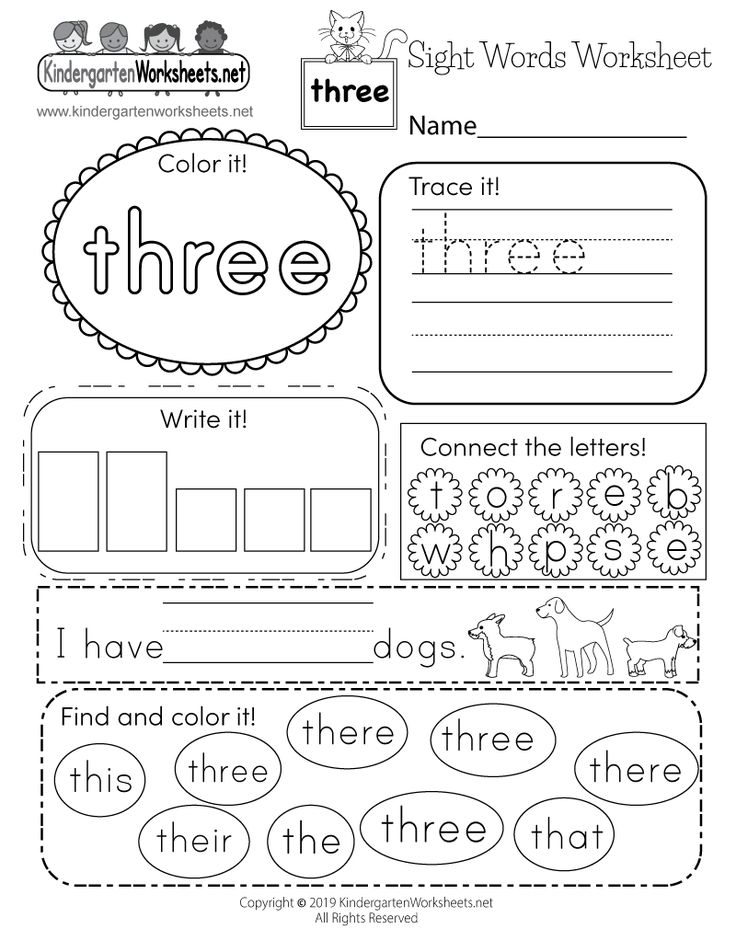 An older child can be asked to sort the pictures by color - "red", "blue", etc. Learn sentence constructions by asking questions about the objects in the pictures: “Where is the bus?”. If you feel strong in yourself, try to make up whole stories about characters from pictures with your child. nine0003
An older child can be asked to sort the pictures by color - "red", "blue", etc. Learn sentence constructions by asking questions about the objects in the pictures: “Where is the bus?”. If you feel strong in yourself, try to make up whole stories about characters from pictures with your child. nine0003
By the way! On this site you can print out English word cards for free and start learning the language with your child right now
. Choose an age-appropriate program and study together, trying to fill the process of learning words in English for children with positive and vivid emotions. nine0003 4. Cartoons in English Watching cartoons in the original will help the child to get used to English speech, catch the intonation and tempo. All this information is sure to be deposited in the mind and will ensure the correct pronunciation in the future. 5. Songs and dances The more activities your lesson includes, the more stable the child's interest in the language will remain.



